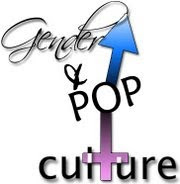Friday, May 21, 2010
Even Cell Phones Have a Gender
Advertisers take products that have no inherent connection to gender or sexuality and create a gender dichotomy in order to sell their product. Gender codes are used to appeal to men by depicting muscular, hyper-masculine men taking control of the object being sold. They also use sexual depictions of women to appeal to men, which is where female sexuality plays a huge role in advertising. To appeal to women, however, advertisers take a different approach—they show how beautiful women will look in the eyes of men if they buy their product. The ways advertisers appeal to men and women all use unrealistic depictions of gender display and perfection, thus perpetuating the unachievable ideologies of how men and women should act.
The way Motorola Razor ads choose to appeal to men is through the use of gender codes that prescribe how masculinity should look. Muscles, strength, control and power are all demonstrated in these ads, which show how even a cell phone can be made either masculine or feminine. Also, because Motorola is selling these cell phones to both men and women, the ads for men need to be even more masculine so that men do not worry that they are buying “feminine” products. Females, on the other hand, only need simple demonstrations of femininity to convince them these phones are suitable for females. This is because it is far more acceptable in modern society for a woman to have masculine traits than for a man to have female traits. As queer theorist Diane Raymond states, “Heterosexuality and homophobia organize the structures in which we are immersed, structures so pervasive as to become almost invisible” (104). These structures are the foundation for advertising, where products such as cell phones must be marketed separately to men and women, for fear that men will not buy a product if they think it is feminine due to the inherent fear of homosexuality that pervades modern culture. This is also why sexual depictions of women are so commonly used to appeal to men, so that men are well aware that these depictions of women are supposed to be appealing to them. Advertisers appeal to men using masculinity and sexist depictions of women in order to reassure an inherently homophobic society that even if a product is being sold to men and women that men will still be masculine if they buy it.
The way advertisers appeal to women is a separate issue, one that uses the gender dichotomy of society to its fullest potential. Even ads for a cell phone, which has nothing to do with female beauty, use the ideals that men have of women to show that if women buy this product, men will find them attractive. This altered idea of beauty, where beauty is measured by how attractive a woman is in the eyes of a man, is something Naomi Wolf has dubbed “the beauty myth.” Wolf defines this beauty myth as telling a story, a story that says that “[t]he quality called ‘beauty’ objectively and universally exists. Women must want to embody it and men must want to possess women who embody it” (121). The beauty myth is evident in these ads for Motorola Razors, where the only two ads that are aimed at women (the tennis player and the teenager on a laptop) are both distorted views of women. The tennis player should be the embodiment of female strength and power, and the tennis player herself demonstrates this through her intense expression. However she is clearly defined as feminine by placing her in a skimpy tank top and using her to sell a hot pink Razor phone. The teenage girl, which one can assume was geared toward spoiled teenage girls who want expensive phones, is literally distorted. The proportions of her body are unnatural and downright wrong. Both these ads show how women are defined as beautiful based on how attractive they are to men, since the tennis player can only be attractive if she is feminine, and the teenage girl must be unachievable skinny and thus distorted in order to be beautiful. Even ads for cell phones use the beauty myth, which shows how prevalent sexism is in the media.
-----------------------------------------------------------------------------
Works Cited:
Wolf, Naomi. "The Beauty Myth." 120-25. Print.
Raymond, Diane. "Popular Culture and Queer Representation." Gender, Race, and Class in Media: A Text Reader. Boston: SAGE, 2003. 98--109. Print.
Images found from the following links:
http://fisherwy.blogspot.com/2007/12/david-beckham-motorola-razr2-v8-lux-ads.html
http://dimbulb.typepad.com/my_weblog/images/2007/08/27/razr2_3.jpg
http://cdn2.ioffer.com/img/1133510400/_i/9607303/1.jpg
http://cache.gawker.com/assets/resources/2006/11/RazrAd.jpg
http://images03.olx.com/ui/1/72/40/547240_1.jpg
http://www.tammowalter.com/portfolio/big%20images/RAZR2_2_big.jpg
http://bittenandbound.com/wp-content/uploads/2007/09/beckham-razr.jpg
http://www.cellphonesupersale.com/wp-content/uploads/2007/04/motorola-razr-v3m-pink-verizon-cdma.jpg
http://compareindia.in.com/media/images/2007/dec/img_33981_motorola_razr2.jpg
http://cdn1.ioffer.com/img/item/307/752/61/motorolahr0.jpghttp://adsoftheworld.com/files/images/Razr2dress.preview.jpg
http://adsoftheworld.com/files/images/Razr2shoe.preview.jpg
https://blogger.googleusercontent.com/img/b/R29vZ2xl/AVvXsEice6JmMs5Cm3tZ3Fx05Jzoa7ImHwRqJYFAD6PCg0OIgydCNN8dYPRY9ALCSWLIBY4SvlWZvNJnTb505XOGvuxKEmoNAGSOym_S_8nzN7U3YYQU4ufPgMelRc7ifSuzts8WLoeun9jN00_r/s400/MotorolaRazr2+2+OGILVY+China.jpg
http://www.newswit.com/photos/2008-10-10/da67159377394ad905b8b769c4c87993.jpeg
Subscribe to:
Comments (Atom)

